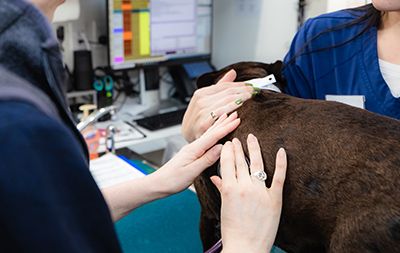Spaying or Neutering Dogs
Deciding to neuter or spay your dog will protect their health and prevent pet overpopulation in your location. The pet homelessness crisis has led to thousands of healthy animals being euthanized daily.
At La Jolla Veterinary hospital, we understand the importance of spaying or neutering dogs. There are medical and behavioral advantages of spaying or neutering your dog.
Understanding Spaying and Neutering
Spaying involves the removal of the female reproductive organs. The vet removes the ovaries (ovariectomy) but sometimes the ovaries and uterus (ovariohysterectomy) during the procedure. The procedure leaves the dog unable to reproduce or go through the heat cycle. Behavior associated with breeding ceases after the surgery.
Neutering involves the removal of the dog’s testicles and the surrounding structures, leaving the dog unable to breed. Behaviors associated with breeding, such as humping, are often eliminated after the procedure. In some cases, vasectomies are performed, but this is not common.
Reasons to Spay or Neuter
Millions of dogs get into the rescue system each year, and less than half end up finding a home. Spaying and neutering help reduce unwanted dogs and has health benefits for them. Your pet can live a longer, healthier life after being “fixed.” Surgery can help prevent mammary cancer, uterine infections, and testicular cancer.
The surgery can help reduce unwanted behavioral problems like roaming or straying from home. Neutered dogs are less aggressive, making them less likely to attack people or get into fights. Also, your spayed dog will not attract male dogs into your compound. We believe that when you spay or neuter your dog, you will have a well-behaved, loving pet.
When to Spay/Neuter Your Pet
Spaying or neutering is ideal at four to six months, but some clinics do it as young as two months. However, different factors influence the timing of the procedure; we recommend waiting until the dog is at least six months. Female dogs should be spayed before the first heat cycle, which occurs between five to 10 months.
Recent studies suggest that it is beneficial for large dog breeds to reach 10 to 11 months before neutering. It reduces the risk of developing cancers prevalent in large breeds. The adult size of the dog is a factor when considering neutering. Large dog breeds usually mature later than smaller breeds.
The Spaying/Neutering Procedure
Spaying and neutering surgeries are relatively common. We perform them safely at our clinic. As with all surgeries, there is always the risk of complications when general anesthesia is involved. Dogs get a comprehensive physical examination to ensure they are in good health before the surgery.
Recovering From Spaying/Neutering
Providing a safe and comfortable environment for recovery is essential. You need to follow the post-surgical instructions to care for your pet. Wearing a cone and getting plenty of rest are recommended. Make sure you check the incision regularly to ensure it is healing well. Our team is ready to answer all your questions and concerns about the surgery.
For more information on spaying or neutering dogs, visit La Jolla Veterinary Hospital at our office in La Jolla, California. Call (858) 454-6155 today to schedule an appointment.








